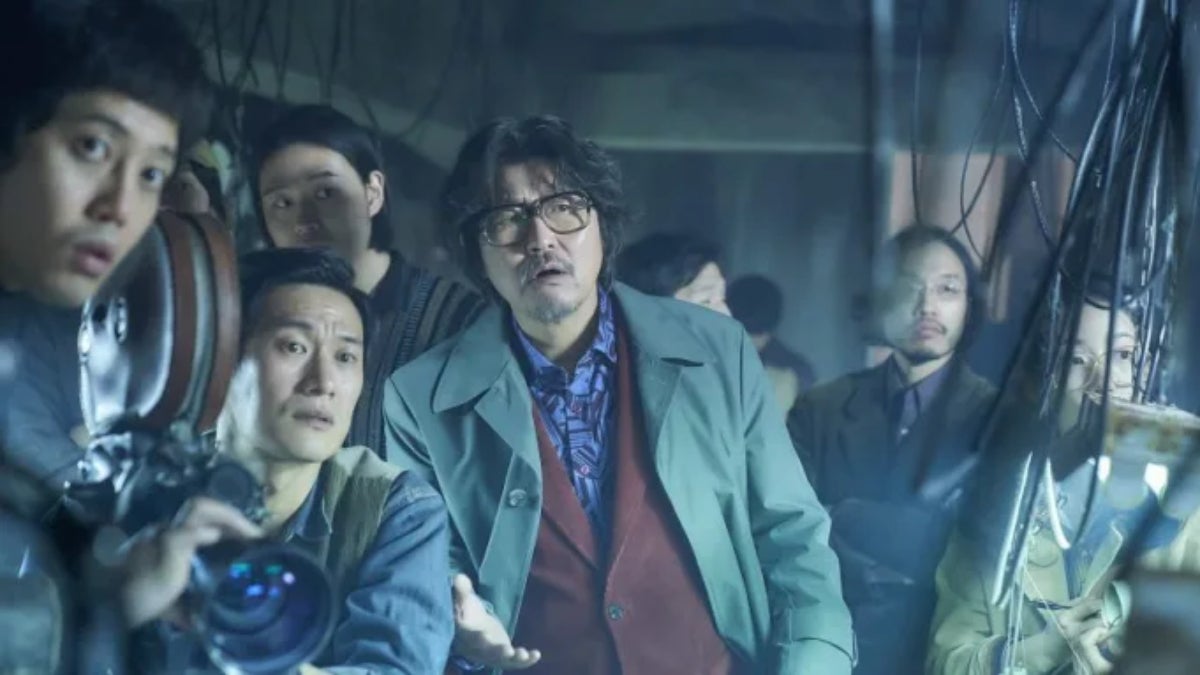
From the Palme d’Or for “Parasite” to a stint on the following jury to a Best Actor prize all of his own with last year’s “Broker,” Song Kang-ho has become a recent fixture at Cannes. This year he made a late-break for Croisette with “Cobweb,” a slight-but-entertaining film about the movies from director Kim Jee-woon. Premiering late and out of competition, “Cobweb” doesn’t equal the films that made Song the new king of Cannes, but it certainly has style to burn and plenty to admire.
Of course, the South Korean star and his “Cobweb” director go way back, as Kim first launched Song’s career with 1998’s “The Quiet Family” and then nourished it with blockbusters like “The Good, the Bad, the Weird” and “Age of Shadows.” Those intertwining paths certainly tangle in this latest collab, which finds Song playing a filmmaker also named Kim.
Don’t expect much autobiography in this ’70s-set exercise in style that tracks a beleaguered crew and the film they are making. While both pictures share the same title, only one could be described as a racy-drama-horror-creature-feature-disaster-movie hybrid (guess which). Moving between film-in-film in black and white, and Kim’s production travails in color, “Cobweb” plays with the codes of mid-century Korean cinema while setting them against the controlled chaos of the filmmaking process.
And, boy, is it ever chaotic. We open on (the fictional) director Kim as he’s already wrapped his latest potboiler, only something nags at the man whose career peaked with his first film and has gone steadily downhill ever since. Perhaps with a few days of reshoots, with just a tweak here and a new scene there, he might rescue his next film from the laughingstock and once again make his mark. But doing so will require calling the full cast back, holding onto the sets due for dismantling and – above all – getting his script revisions passed by the censorious Ministry of Culture.
As the color narrative thread tracks an unending process of problem-solving – a marathon of securing the sets, winning over financiers, dealing with actors too drunk to perform, and eventually locking the full cast and crew on set to force a mammoth 48h hours of reshoots – the black and white strain brings that vision to life to delightful effect. That this film-within-a-film already has a pitched and nervy string score is just one indication that this version of “Cobweb” is the finished film run in parallel, and not just the footage Kim and crew are capturing on set. Only, to the film’s slight detriment, the Movie Movie strand offers a far more interesting proposition.
The film’s flaws are very much inherent to the greater design because exploring the chaos and tradeoffs of a film shoot cannot yield that many surprises, whereas the black-and-white film-within-a-film marks new land. Every time we return to the marathon reshoot we basically know what to expect, where the story will go, and how Kim and his crew will react. And every time we plunge into a note-perfect recreation of mid-century outré fare we are once again subject to surprise as the fictional “Cobweb” revises and reforms on the fly.
Inspired to a certain degree by the 1960 film “The Housemaid,” the movie version overlays family melodrama with horror elements while echoing the general chaos of the set in often unexpected ways. Director Kim Jee-woon is alight within a stagy visual playground that offers a chance to let loose, fully merging with his on-screen avatar as directors fully at play.
















